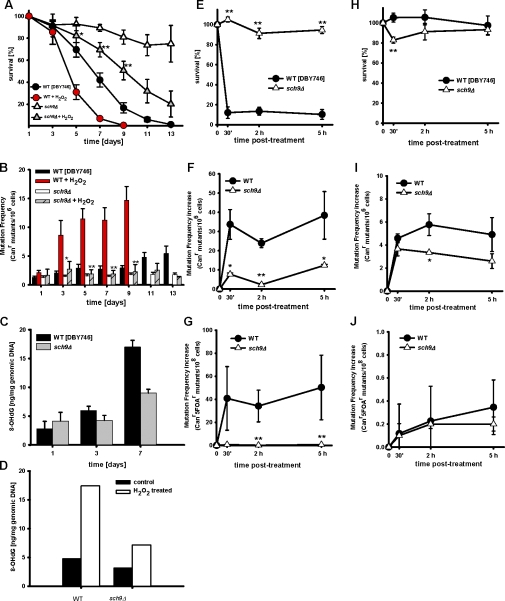Figure 6.
The lack of SCH9 protects against oxidative stress-induced genomic instability. (A) Chronological survival and (B) mutation frequency (Canr) of the wild type (DBY476) and sch9Δ mutants. Cells were treated with 1 mM H2O2 at day 1 and day 3. *, P < 0.05; **, P < 0.01; sch9Δ versus wild type (WT), two-tailed t test at the indicated time points (n = 4). (C) 8-OHdG contents in the wild type (DBY746) and sch9Δ mutants during chronological aging. (D) Day 3 SDC wild-type and sch9Δ cultures were treated with 1 mM H2O2 for 48 h. The mean of two independent experiments in duplicate is presented. (E–G) Wild-type (DBY746) and sch9Δ mutant cells were exposed to 100 mM H2O2 for 30 min. Survival (E), mutation frequency (F; Canr), and GCR (G; Canr5FOAr) were monitored at 30 min, 2 h, and 5 h after the end of H2O2 treatment. (H–J) Wild-type (DBY746) and sch9Δ mutant cells were exposed to 0.02% MMS for 50 min. Error bars indicate ±SEM. Survival (H), mutation frequency (I; Canr), and GCR (J; Canr5FOAr) were monitored at 30 min and 5 h after the end of MMS treatment. For E–J, data represent mean ± SEM (error bars), n = 3. *, P < 0.05; **, P < 0.01; two-tailed t test at the indicated time points, sch9Δ versus WT.

